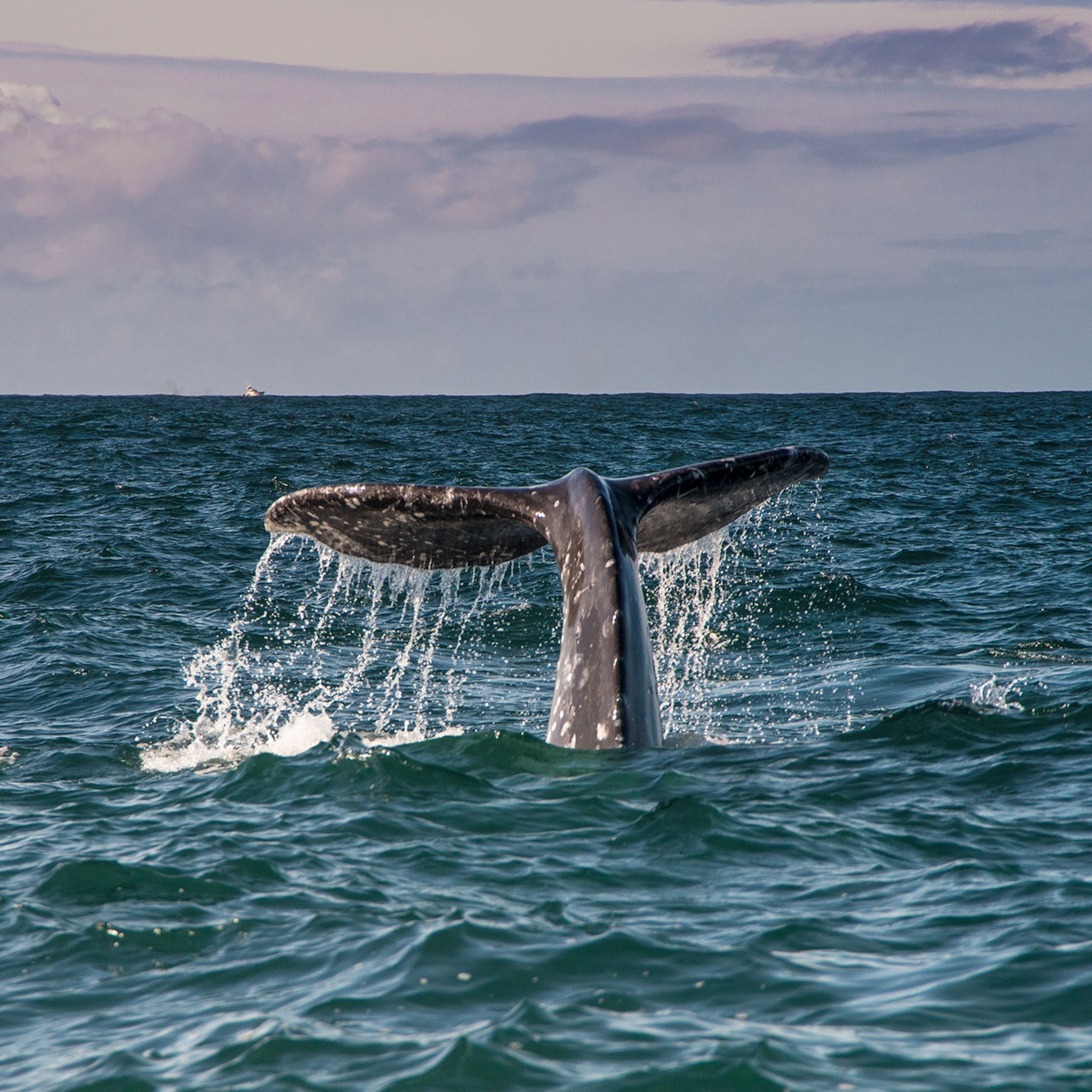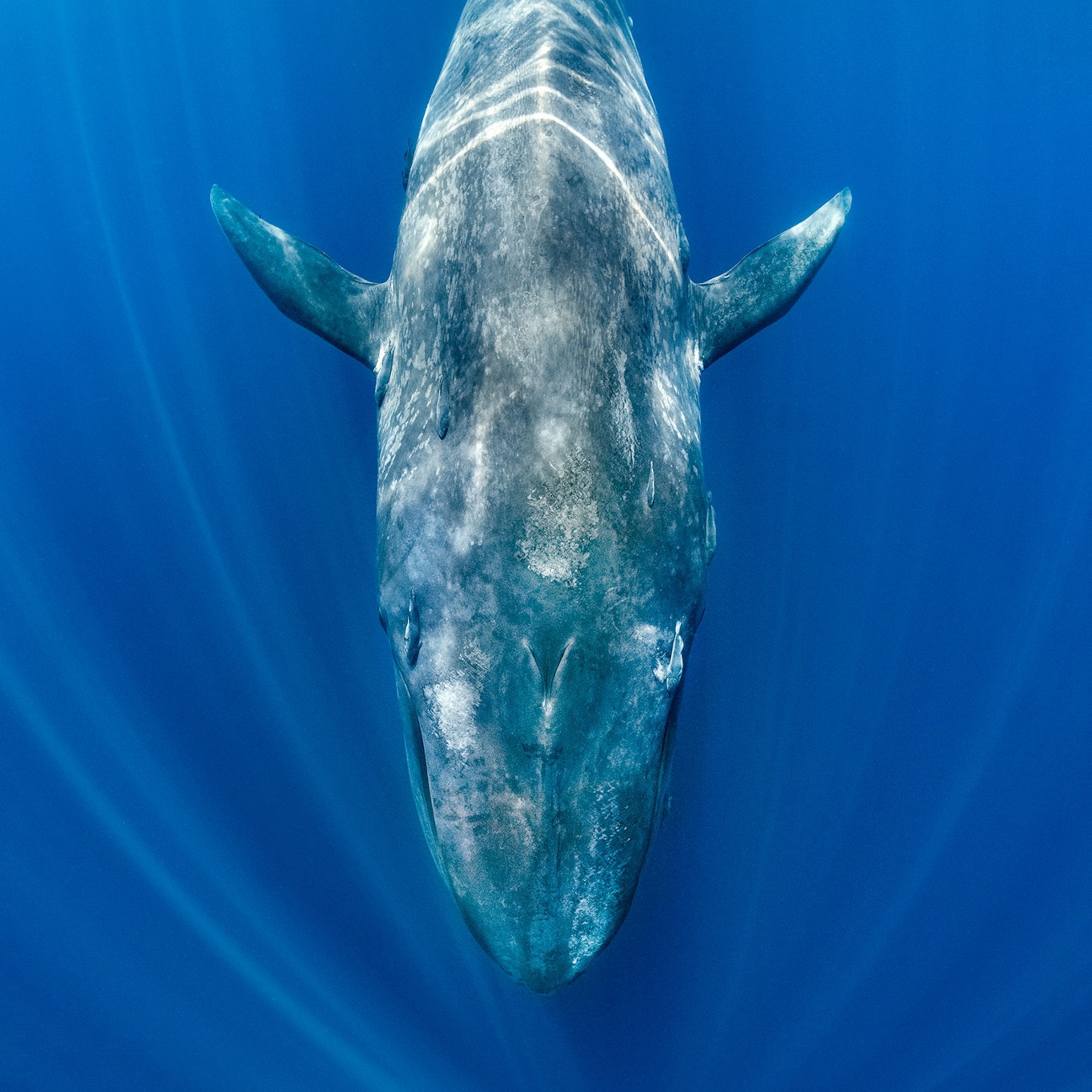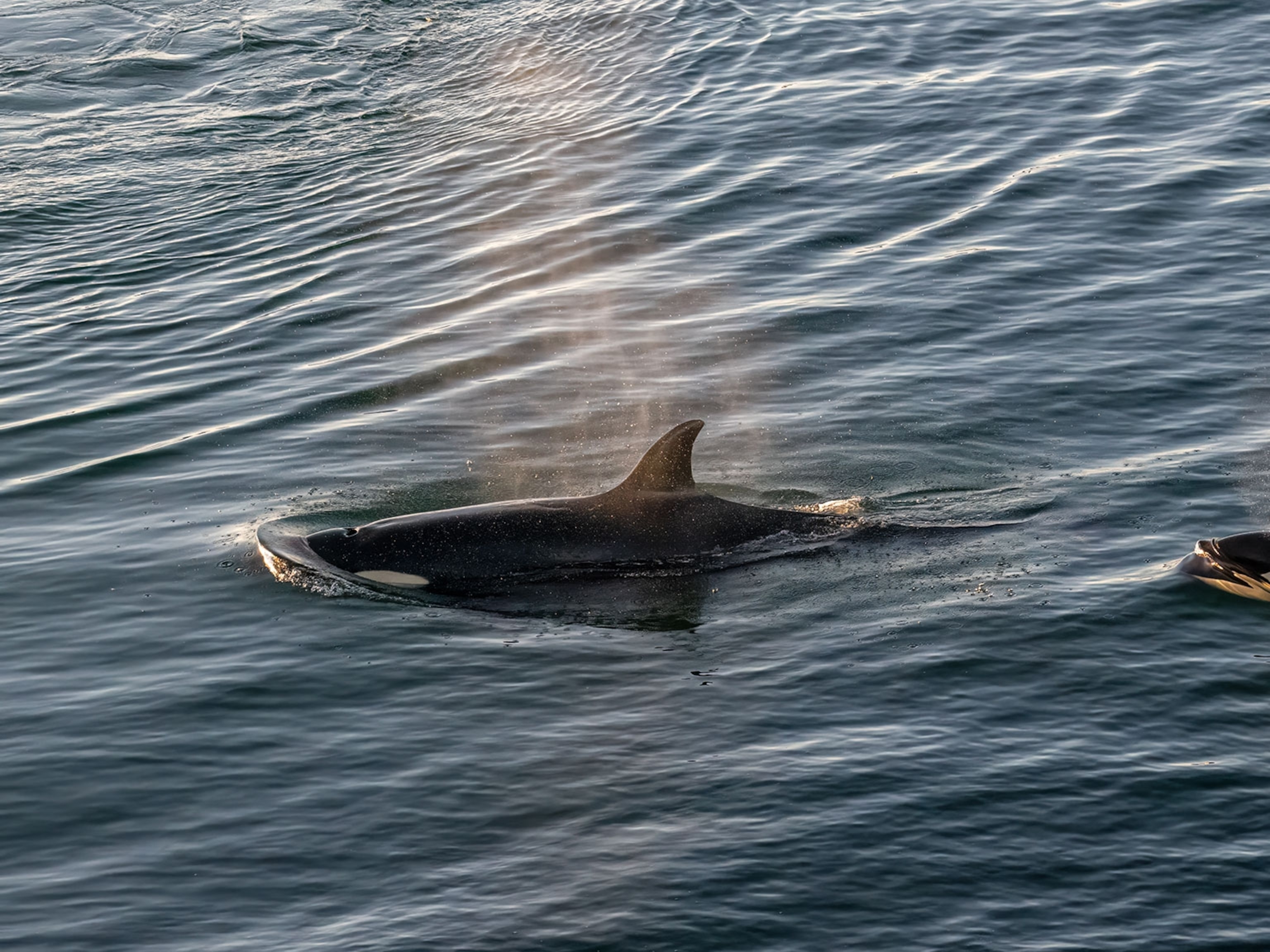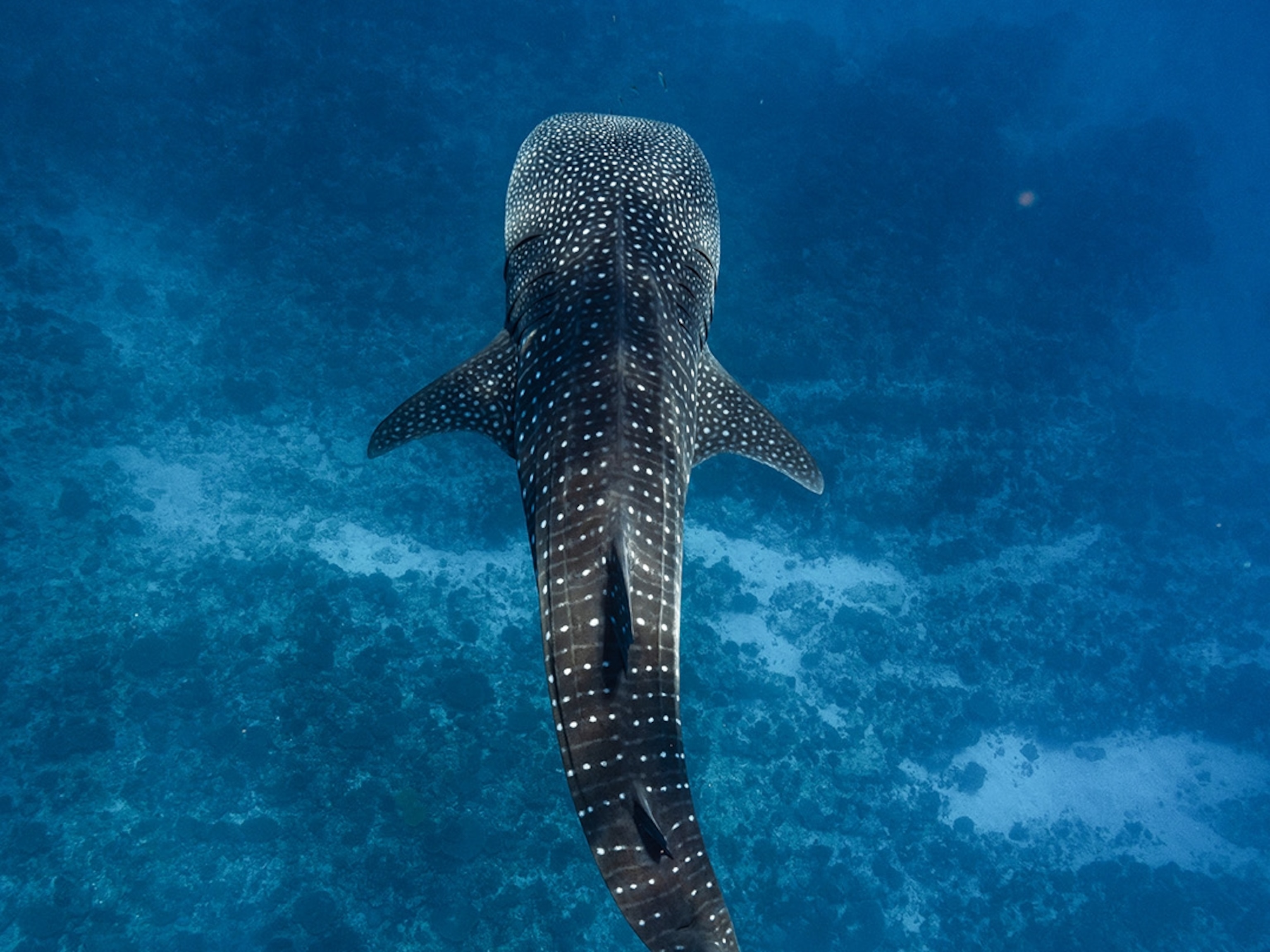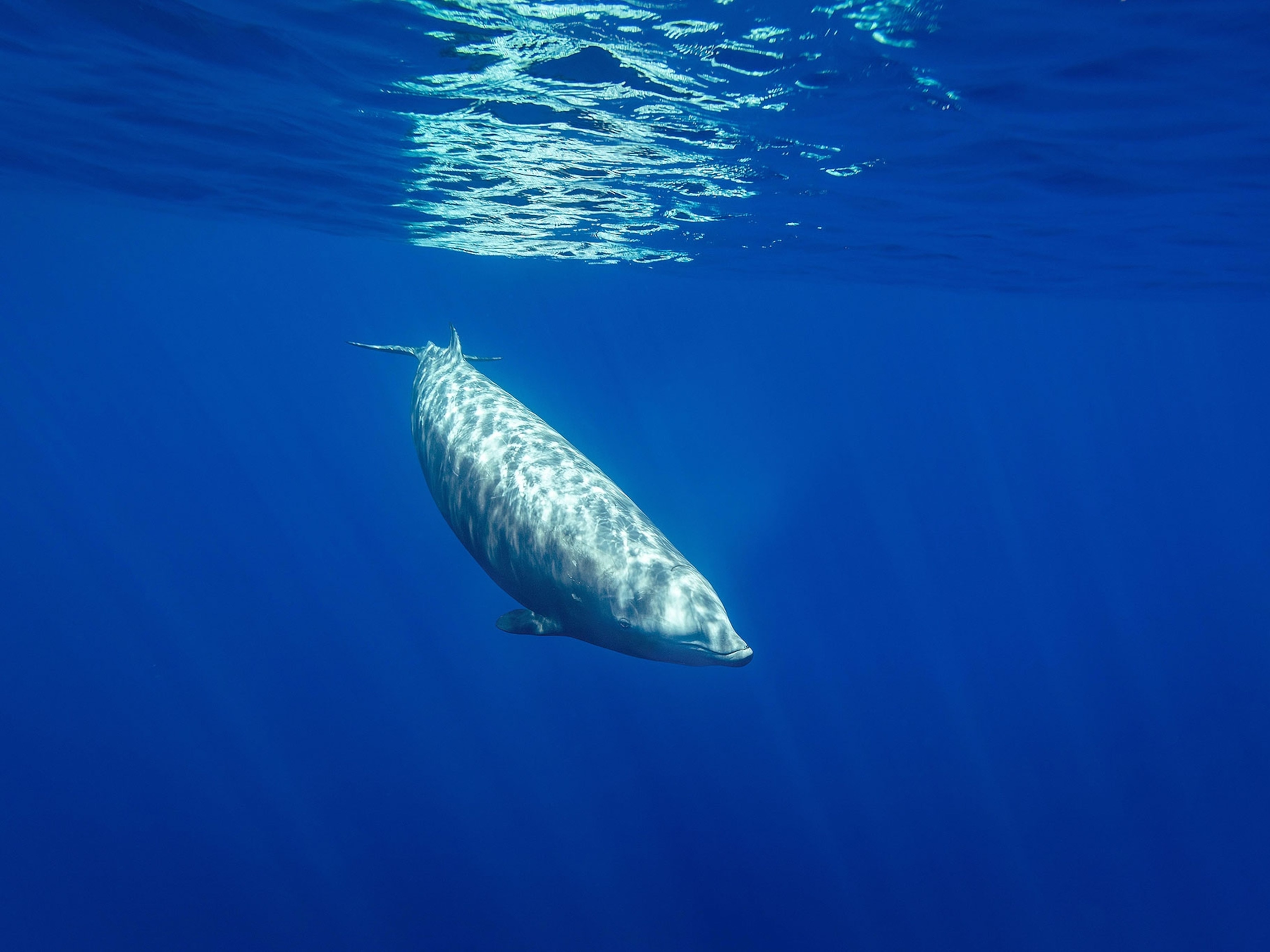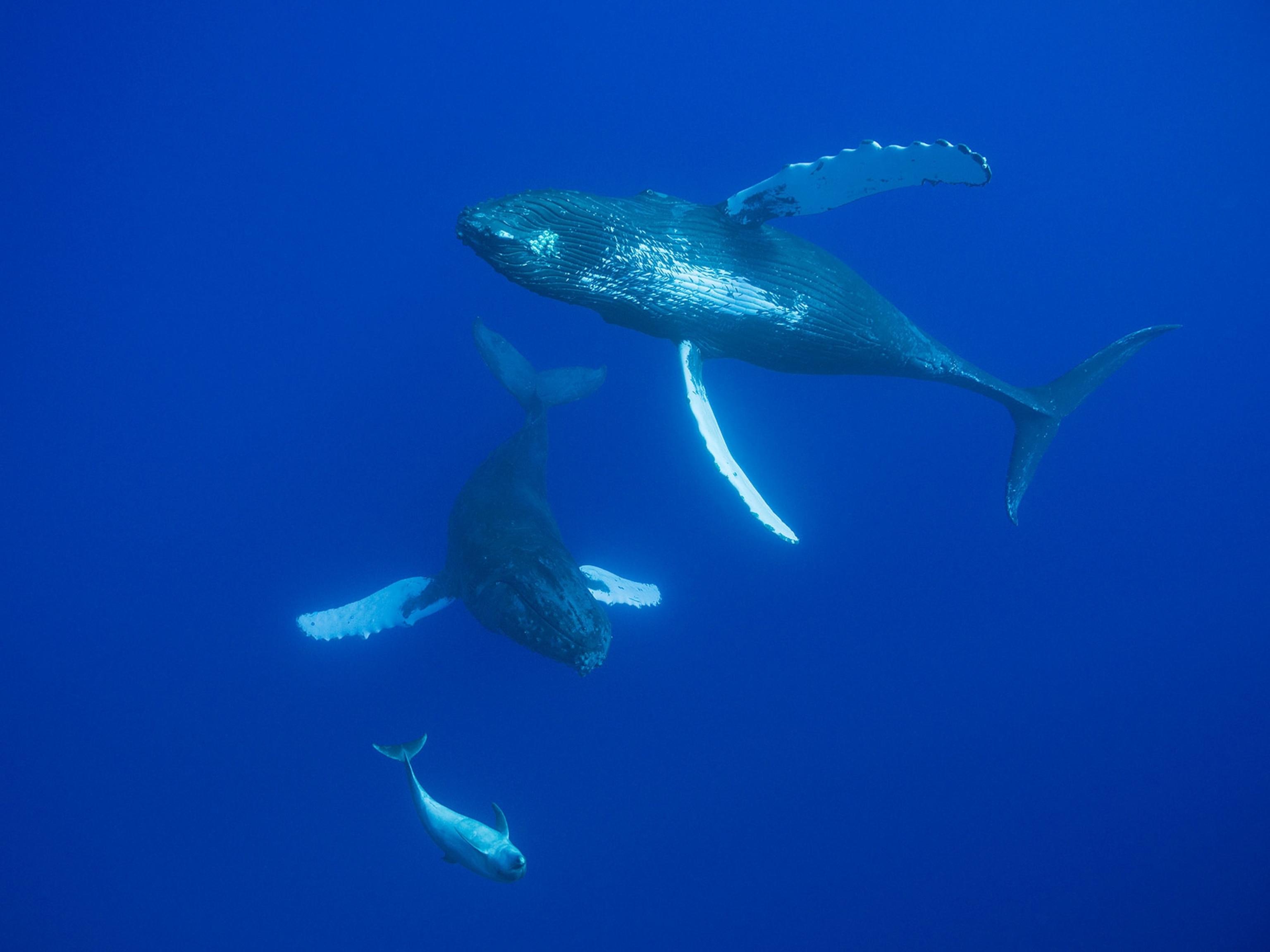Exclusive Video May Show Blue Whale Calf Nursing
Aerial drone footage from New Zealand offers hope for embattled species.
Gorgeous new footage may shed light on one of the mysteries of the largest animal that ever lived: How do blue whales nurse? (See updates at bottom.)
National Geographic Explorer and marine ecologist Leigh Torres made the likely discovery of nursing while on a research cruise in the South Taranaki Bight off the western coast of New Zealand. On February 5, the Oregon State University professor got video that she thinks shows a mother blue whale and her calf nursing beneath the waves.
Although she can't definitely say that's what the pair was doing, the fact that the smaller whale kept alternating between breathing at the surface and swimming under its mother to spend some time at the same spot strongly suggests nursing, says Torres. This would make it the first footage of nursing in blue whales Torres was aware of (since the publication of this story, two photographers have come forward with earlier footage that may also show the behavior).
A Rare Encounter
Torres and her team spotted the pair of whales while searching the area in their research vessel. They kept a safe distance away and launched a small drone into the sky, as Torres has done before to measure whale size and to count gray whales off the U.S. West Coast. (Read more about or support Torres's work.)
"We had no idea they were [likely nursing] when we saw them from the vessel," says Torres. "But from the overhead perspective we could clearly see this coordinated behavior between mother and calf. It was beautiful to see."
Blue whales have nipples that are covered by folds of skin, in order to make their bodies sleeker in the water. Precisely how calves can access the milk is unknown, but Torres says it is likely some combination of the mother flexing her abdominal muscles to expose the nipple and then squirting the milk into her baby's mouth (they don't have the flexible lips for suckling that many land mammals posses).
Blue whale milk is extremely rich, composed of about 40 percent fat and 13 percent protein. In contrast, human breast milk is much more watery and is composed of only four percent fat and one percent protein. Still, blue whale calves must consume 50 gallons (190 liters) of milk a day, during which time they gain 200 pounds (90 kilograms).
Blue whales nurse for five to seven months, during which time they put on 38,000 pounds (17,000 kilograms). The calf in the video is likely four to six months old, says Torres. (See more footage of a blue whale mom and calf.)
Sign of a Healthy Population?
Torres thinks the whales in the video belong to the pygmy subspecies of blue whales. Despite the name, they are still huge, growing to about 89 feet (27 meters) long, compared to about 112 feet or 34 meters long for the biggest blue whales, the Antarctic sub species. Little is known about how many pygmy blue whales there are (one estimate says about 10,000), how many live off New Zealand, or where they go in the ocean.
On her research trip in February, Torres saw five pairs of mothers and calves in a small area, including the pair in the video, as well as ten other adult whales. Such a high concentration of the animals is unusual, though it could be at least partially attributed to a rich supply of krill, their primary food source.
"Seeing nursing activity and a number of pairs shows us that this population is reproducing and that this is an important area for moms to come and raise their young," says Torres.
Pygmy blue whales, like all blue whales, were hunted nearly to extinction in the first half of the 20th century. Torres is optimistic that they seem to be making a slow comeback, but much more information is needed.
Blue whales continue to be threatened by unintentional collisions with ships and loud noises from oil and gas development, which can interfere with their ability to communicate with each other.
Torres hopes to return to New Zealand soon to continue studying the whales. "The area needs to be managed appropriately in terms of protection of blue whales and their habitat," she adds.
Note: After we published this story a reader alerted us to this older video on YouTube, which also purports to show a blue whale calf nursing. After watching the video, Torres says it's possible that's what is going on but says the calf isn't visible enough to tell. "Our video is much more convincing that they are nursing because the calf is repeatedly ‘stationed’ below the mother for an extended period," she says.
A second reader, nature filmmaker Patrick Dykstra, alerted us to footage he took in mid-2015 that also may show blue whales nursing. The clips shared online are too brief to determine but Dykstra says he had recorded several minutes of the behavior. Out of consideration for these two sources we have amended the title of this story to reflect the fact that Torres's video may not be the first of the behavior in the species, as we first thought.
Updated on March 8 at 10:30 am ET.


